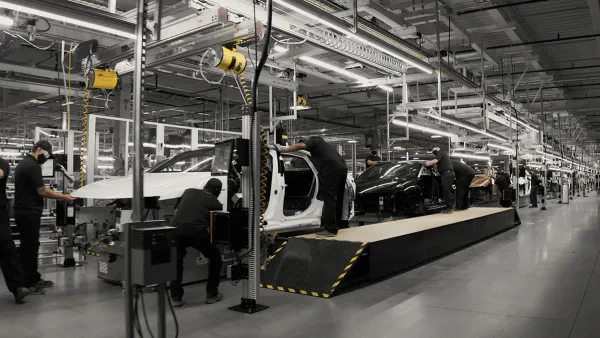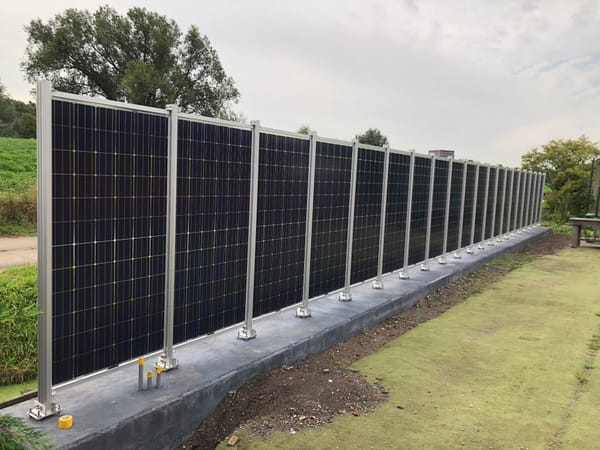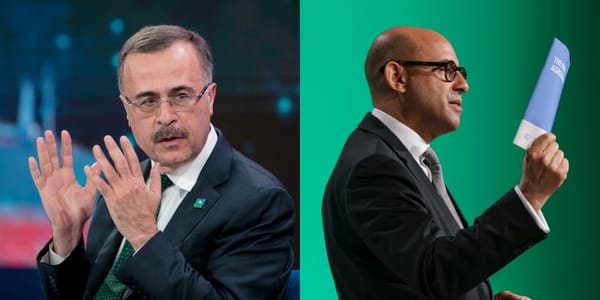What are Loss and Damage payments and green energy financing and where will it come from?
Fourth in a series of five on expected COP28 issues
Good Afternoon!
Today I’m doing a kind of two-fer, as I’m jamming in some stuff about Loss and Damage payments, which have been kind of dominating the news since their negotiations have been going so badly.
-Mike
This is the fifth in a series about issues that will occupy negotiators at Dubai’s COP28 meeting next month.
Oct. 19 – The four major issues shaping up COP28, plus one more
Oct. 20 – Why we’re talking about abatement instead of fossil fuel phase out
Oct. 24 – Developing country finances are now a top climate negotiating point
Oct. 26 – How Global Stocktake results and carbon capture will play into negotiations
Today – Green energy financing, where will it come from?
Nov. 2 – Concerns surrounding the COP28 president

What’s happening with Loss and Damage payments?
New reporting from Politico reveals climate negotiators’ struggle over “Loss and Damage” funds, a $100 billion per year fund that would compensate developing countries for climate-related disasters, is much more serious than originally thought. Talks with a 24-country committee in Aswan, Egypt broke off last week as developing countries and a U.S.-led group encountered intractable differences.
Earlier reporting suggested the main contention was over where the fund should be hosted – the U.S. wants it at the World Bank, developing nations who have long been under the Bank’s financial oversight distrust the bank and want a new organization they can control.
But Politico’s reporting suggests a much bigger sticking point: Developing nations want the rich countries to be legally obligated to pay into the fund, since rich countries are largely responsible for climate change, which rich nations insist payments should be voluntary and can include philanthropies. In addition, negotiators have not set who has to pay into the fund, as rich countries are demanding oil nations be included.
What’s the politics?
If you’re in the United States, the Republican grip on the U.S. budget has become topic number one, particularly this week as GOP Congressional leaders linked cutting funding for the Internal Revenue Service to financing Ukrainian and Israeli military aid. Adding to the difficulty, the IRS cuts would actually lead to fewer audits of rich Americans, ultimately reducing U.S. government revenue. In these circumstances, it’s hard to imagine any Republican-controlled Congress approving any kind of U.S. climate aid – not to mention that the GOP House Speaker Mike Johnson, is a climate-skeptic from oil country.
As a result, U.S. climate negotiators are loath to agree to any kind of legal obligation to climate payments. Such an agreement would likely result in a Congressional revolt, and maybe even the U.S. dropping out of global climate negotiations entirely.
From developing countries’ perspective, $100 billion a year for Loss and Damage is table stakes. As I laid out a few weeks back, to adequately address climate, rich nations need to pony up for a green energy transition, pay for carbon emissions reductions, and to reduce global debt, adding up to trillions of dollars a year. If the U.S. can’t commit to Loss and Damage, developing countries are saying they don’t believe the U.S. will do anything to help them out.
What’s the likely outcome?
Staff-level negotiators are meeting again next week in Abu Dhabi next week to try to hammer out a solution, but unless the U.S. agrees to a legal obligation to payments, it seems like they will stall again, kicking the issue to ministerial level discussions in Dubai at COP28. If that happens, negotiators are concerned the drama over Loss and Damage would push other issues off the table, in particular a move by the European Union to set a fossil fuel end date, which China has called “unrealistic”.
What’s happening with financing green energy development?
Perhaps the one aspect of climate change adaptation is financing the technology for a green economy. Because it is additive, everyone involved with it gains, as opposed to subtractive like making carbon emitters pay taxes, converting to a green economy attracts more supporters than detractors.
But financing green development to the extent necessary to reach net zero in a short period of time, whether that time scale is by 2030 or 2050, will require major private investment, extensive foreign aid, and significant government subsidies.
The estimates for how much investment is needed are all over the place – but huge no matter what. A McKinsey estimate comes to $3.5 trillion a year. The IEA says $4.5 trillion. A Bloomberg study says $6.9 trillion. A recent study just on greening buildings in emerging markets says a $1.5 trillion investment will be needed. Currently, about $1.7 trillion a year is going to green development.
When you bore into these studies, most of it boils down to rich countries growing their capacity, and then emerging markets get trickle down results. Authors claim that because the emerging economies are so small and opaque that it’s hard to make accurate estimates. Thus, a skeptical view would suggest the investment needed would be on the higher end of these estimates.
How would green development be financed?
In rich countries, governments have enough financial resources that they can subsidize green development. The U.S. has the Inflation Reduction Act, China has bank loans directed by the government, and the E.U. has the Green Deal. In each of these cases, government subsidies essentially act as seed financing to kick off nascent industries with the expectation that new enterprises will become profitable, setting off a flywheel of business development that encourages other green businesses to startup and grow.
Developing countries, with varying levels of government funds and private capital are somewhat more complicated. Financing for green development will likely come through a mixture of multilateral bank financing, direct foreign aid from rich countries, and private investment “encouraged” or subsidized by rich country governments.
The chief mechanism for investment will likely be multilateral development banks (MDBs) like the World Bank and the collection of Chinese state-owned banks that finance the Belt and Road Initiative. The World Bank recently committed to financing more green energy projects, but it and other MDBs have long been criticized for moving slowly, charging high interest, and being risk averse. Bank leaders are promising that everything’s different now that climate is at stake, but to increase their lending the banks need more capital from rich countries, which local taxpayers are not going to be crazy about (see GOP, Mike Johnson, above).
A second system for financing green development was dreamed up at Glascow’s COP26, Just Energy Transition Partnerships, where groups of rich countries are supposed to pool together foreign aid to assist targeted emerging economies with negotiated development projects. Unfortunately the Partnerships have been slow to form and the targeted countries have complained that aid packages are stingy. For instance, a group of G-7 countries offered $15.5 billion to Vietnam to transition it from coal to net zero by 2050, but Vietnam is upset that only 2% of the pledges are grants, burdening the country with debt that could drag down its economy.
Finally, rich countries have dangled the idea of direct subsidies to developing nations paid for by a global carbon emissions tax. It’s an amazing, futuristic idea that totally ignores the difficult politics of creating an equal tax around the world. The G20 managed to agree on a standardized corporate minimum tax rate in 2021, so it can be done, but that was a pre-existing tax that needed to be level set, as opposed to a new one that not every taxpayer agrees is necessary.
What’s the politics?
Here, the politics of Loss and Damage payments are an important precedent. The amount of government foreign aid required to subsidize green development will not be small. Already, it’s becoming clear that the U.S. domestic subsidies for the Inflation Reduction Act are not enough to achieve net zero – another round will be needed. So, rich countries whose political will has already been tested by domestic subsidies, will be hard pressed to find more funding to subsidize emerging economies’ green development.
China has been making financing green energy in developing countries a top priority, as it recently announced at its annual Belt and Road Initiative meeting. Generally, because investment is a “feel good” move, we should also expect a series of big pledges to be announced at COP28, like a deal for South Africa’s Just Energy Transition Partnership.
But, ultimately, to make investing in emerging economies attractive, those countries will likely need to make some kind of concessions – many of which will only attract more charges of rich countries suppressing emerging countries. At the same time, rich countries need to lower offered interest rates from the 10-15% offered to developing countries to the 3-4% usually offered to wealthier countries. Those trade offs will be hard to negotiate and likely politically hard to sustain if there aren’t immediate big, positive results.
Other Things Happened
- A study published in Nature finds that last spring’s U.N. climate study overestimated how much carbon the earth can absorb before we reach 1.5°C of warming. We actually only have six years before it’s too late.
- One group says “Carbon offsets are incompatible with the Paris Agreement” and one study says the E.U.’s carbon trading system reduced “carbon dioxide emissions by 14-16%”. Scientist street fight!
- This explainer about why the U.S. electrical grid is so tangled is… [chef kiss emoji]
You made it to the bottom! You think fashion isn’t art? That it’s not a big deal? Take a listen to Articles of Interest. The episodes on American Ivy are mind blowing.





